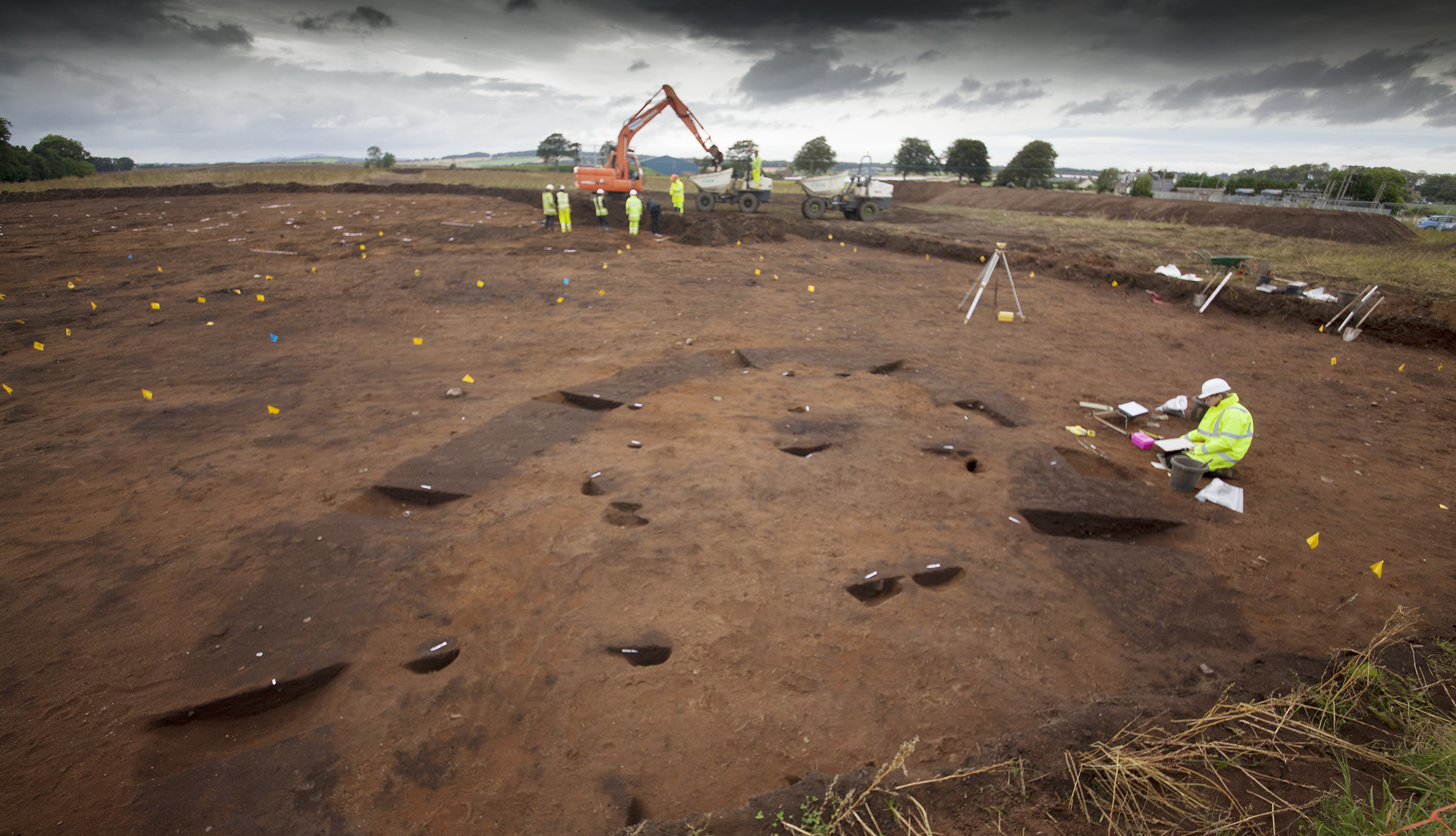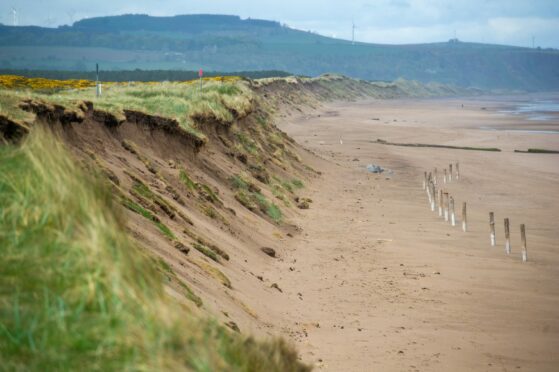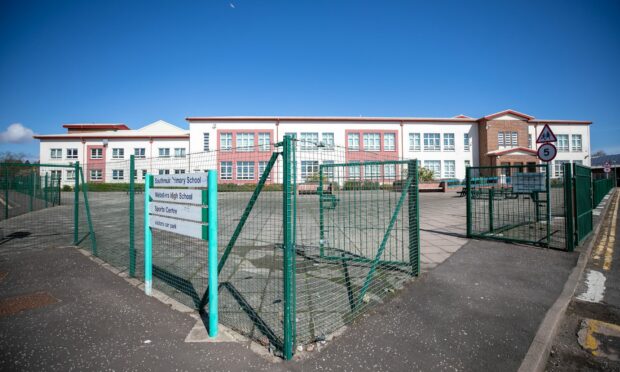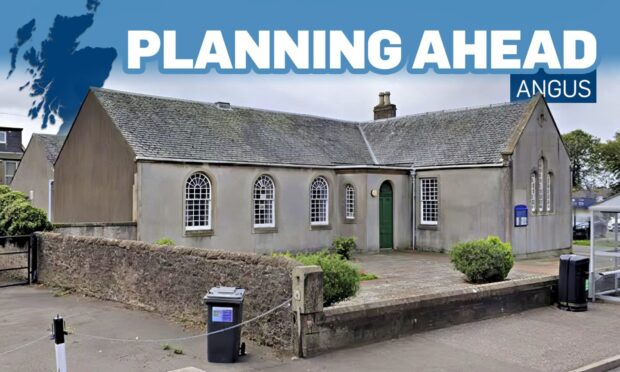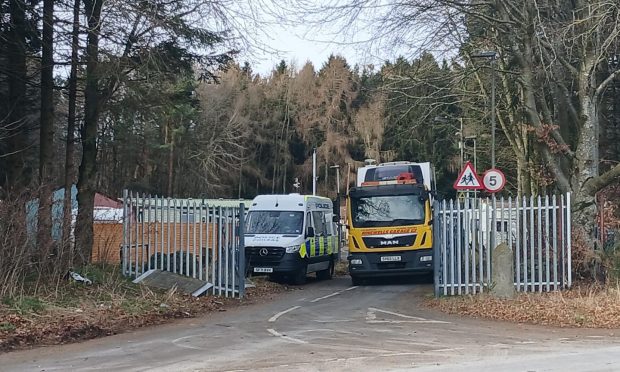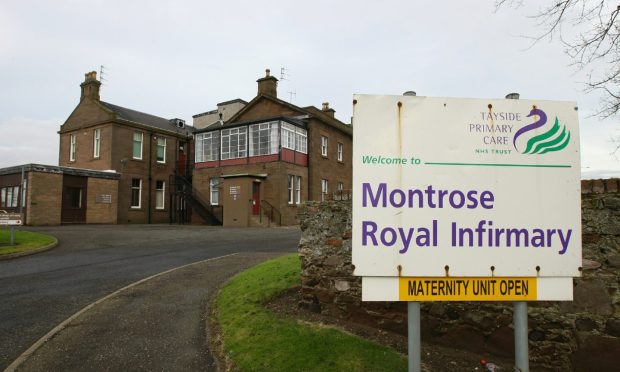The chance discovery of ancient relics in an Angus field has been described as internationally important by leading archaeologists.
Routine checks unearthed a trove of Bronze and Iron Age artefacts before work began on a Carnoustie football ground in September.
Over the course of a week, real-life time teams found 650 features including a gold sword and Stone Age longhouse that could be up to 6,000 years old.
But uncovering the priceless haul has come at a high cost, according to a report before Angus councillors on Tuesday – the excavation at Newton Farm alone cost £111,000 to carry out.
This includes £11,100 for examining a sword, while the total archaeology bill is expected to top £286,000.
Dr Alison Sheridan, curator of early prehistory at the National Museum of Scotland, has been consulted on the hoard.
She commented that “the hoard is unquestionably of national, indeed international significance”.
The majority of the finds provide evidence of Bronze Age settlement activity between 2200 and 800BC, but there is evidence of earlier human activity in the form of the remains of a Neolithic long house between 4000 and 2500BC.
Due to the fragility of the exposed metalwork, and the unknown extent of material, the hoard was block lifted and dissected off-site in laboratory conditions.
Alan McKeown, strategic director for communities, writes: “Several of the features are extremely rare but what could not have been predicted was the presence of a hoard comprising a leaf-shaped sword, still in its wood and animal skin scabbard; a socketed spearhead decorated with a band of gold, and contained within an animal pelt or fur skin; a “sunflower” or disc-headed pin, with traces of textile attached to it; a pommel, a mount/chape and an unknown ‘mystery’ item of organic material.
“Throughout the process, our contractors have followed professional protocol and taken advice and guidance from specialists and experts from throughout the UK and Northern Europe, to ensure that such a unique find is correctly recorded, analysed and conserved.
“The material contained within the hoard is of local, national and international significance. The rarity and uniqueness of these items cannot be overstated, and the implications for adding to our understanding of the Late Bronze Age in Scotland, Britain and Europe are significant.
“The hoard presents an opportunity to learn a great deal about the late Bronze Age in Scotland, and in particular having settlement activity associated with a hoard opens up avenues of investigation rarely, if ever, available to archaeologists in Scotland, Britain or Europe.
“It offers the chance to find out more about the people living in the Angus area in the Bronze Age, and in particular to establish if the occupants of the site at Carnoustie were of particular importance in local, or wider, Bronze Age society.”
It is anticipated the pitches project will be allowed to commence in March while post-excavation is negotiated.
The total cost of archaeological services of £286,747 will be fully funded from uncommitted resources on the Carnoustie Pitches projects of £29,478, plus additional funding of £257,269 from the council’s capital contingency.
It has made funding available within the 2012-2017 plan totalling £200,000 and a grant aid application to sportscotland was successful for a contribution of up to £165,000 or 50% of eligible costs.
